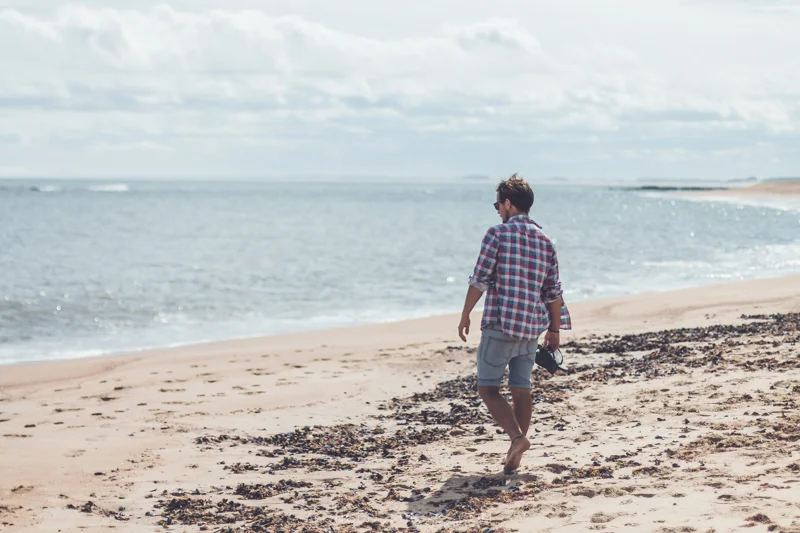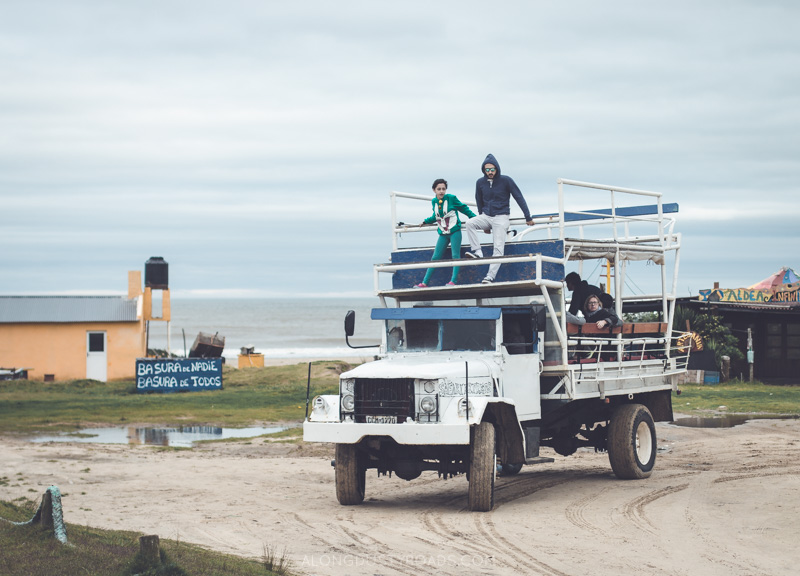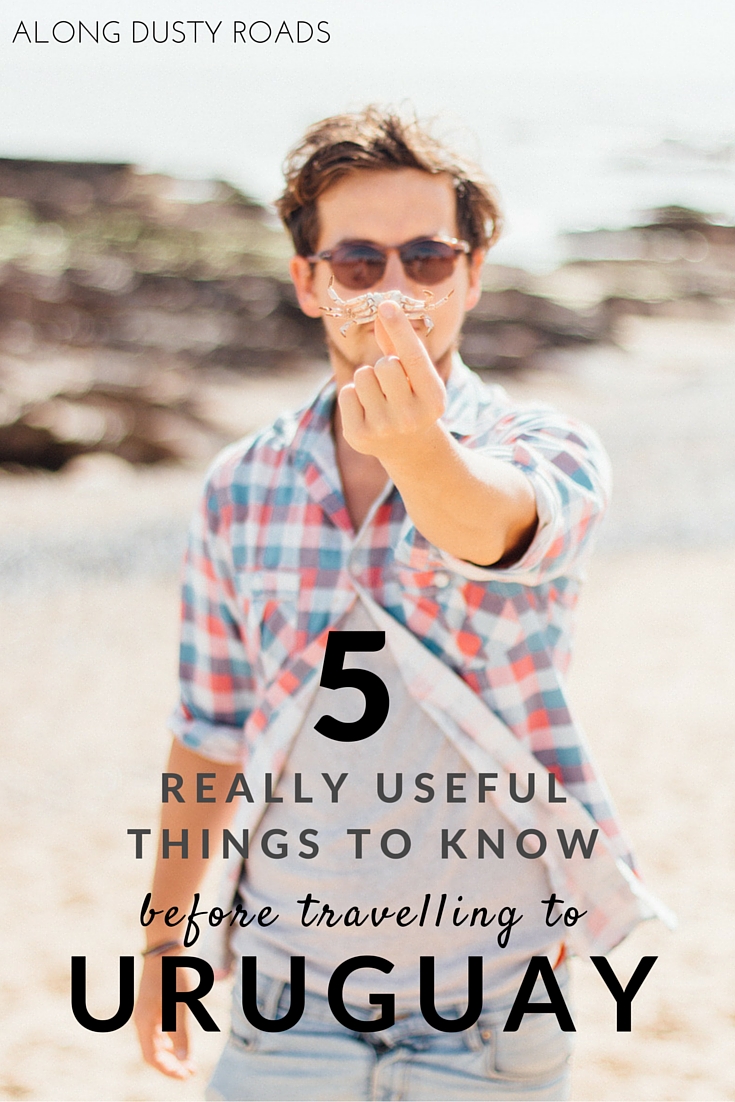Uruguay, a country of just over three million is often overlooked on the South American backpacker circuit. With a reputation as being a little pricey, and having to compete with the buzz of neighbouring Argentina and Brazil, it's seems that the attractions of this compact country simply aren't widely promoted.
However, should you make the effort to visit in summer, you will be rewarded with some gorgeous coastline, surf opportunities and a laid-back welcoming population. We spent three weeks visiting the most well-known spots along the coast and here are some of the things you need to know before planning your trip there.
#1 seasonality is crucial
This is the point which we wished somebody had told us before we visited; the coast of Uruguay is practically dead for ten months of the year.
Now, you may be thinking that that's surely a good thing. Empty beaches, cheaper accommodation and some gorgeous spots all to yourself.
The reality, at least when we visited in November, was more like this: 95% of accommodation is closed, bars, shops and restaurants are locked up, streets lie empty and none of the holiday homes have occupants. In Punta del Diablo, it felt like a ghost town. In La Paloma and Punta del Este, the hostels were still refurbishing and most were shut until December, meaning there was little to no atmosphere in town.
We asked some locals if this was a common occurrence and the answer was a resounding 'yes'.
If the weather is good, then this may not be too much of a problem. However, if the sun is obscured by grey clouds all day, then you will certainly struggle to enjoy it (and remember that even in summer the Atlantic sea is pretty chilly).
On the flip side, Uruguay's intense peak season of late-December to late-January sees crowds, traffic jams, price increases and lack of availability in hostels as most of Uruguay and parts of Argentina and Brazil up sticks to their holiday homes for the summer. Punta del Este's population swells from around 20,000 to 250,000, whilst Punta del Diablo increases from about 1,000 to 30,000 in this brief period.
So, planning the best time to visit the beaches of Uruguay is a difficult science; go too early, and there will be no-one there to have fun with, go too late and you'll be wrestling with the crowds for a space on the beach or a bed for the night.
Visiting during peak season? Be sure to book up your accommodation early - click here to check availability and prices.
#2 each beach town offers something very different
In such a small country, the contrasts between the beach towns are marked - you can go from the 'Monaco of South America' to a community with no electricity in a matter of hours.
Punta del Este is the the most famous beach resort in the country. Although it definitely has its charms - and some nice, chilled out beaches outside of town - there's no mistaking that it is primarily a rich man's paradise where yachts share the dock with battered old fishing vessels and luxury high rises, nightclubs and casinos line the streets.
Yet, four hours down the road in the popular hippy haven of Cabo Polonio, where accommodation is formed mainly by bits of wood put together with nails and hope, there is only one shop and electricity, running water and wi-fi don't exist.
There really is something for everyone.
#3 peak season is not possible on a budget
Uruguay is not well-known as a budget backpacker destination and, after our three weeks in the country, we can confirm that it is one of most expensive countries we visited in South America.
If you are planning a visit, then you really need to know in advance that during the peak month of summer we mentioned above, already high accommodation rates witness further increases, sometimes triple. An example: in Cabo Polonio, which has some of the most basic accommodation we've stayed at in Latin America, an 'off-season' dorm bed will cost around $400-500 UYU. In January, increased demand pushes the price to $800-1000 UYU and beyond. A local in Punta del Diablo told us that a one day rental in high season can cost the same as one month in low season. If you do plan to visit at this time, then booking ahead is essential - check out the best hostels here.
There's no doubt that the country's coast is charming and beautiful in parts. However, at those prices and given how crowded it would be at that time, you may reconsider whether it is worth it. Consider visiting in late November / early December or late February onwards to miss most of the crowds and higher costs, whilst still being able to enjoy the scene.
#4 transport links are good
Thankfully, transport in Uruguay is reasonably priced, of a good standard and, with the short distances between the most popular spots on the coast (including Montevideo and Colonia del Sacramento), it's perfect for covering a lot of ground in a short time. In fact, you're unlikely to ever be more than three hours bus journey away from your next destination. Some routes only have a few departures every day, so it is worth checking out schedules the day before you aim to travel.
The most memorable transport is undoubtedly the open-air double-decker trucks which shuttle travellers across sand dunes to the remote, but very popular, town of Cabo Polonio. There is no road access and, unless you're a resident of the town, then cars are not allowed to enter.
#5 wildlife watching and surfing opportunities abound
In a few days of just walking around the beaches, we saw dolphins, sea-lions, penguins. In Punta del Este, a family of sea-lions hang out at the marina, whilst in Cabo there is a large colony of them by the lighthouse. In Cabo, we were also lucky enough to watch three dolphins playing in the sea, right in front of us.
Between June and November, it's possible to see southern-right whales bathing by a number of beaches (more info here). If you're visiting the coast, there are also some excellent horse-riding opportunities at the beaches or in nearby Rocha, where you can venture through the sierras on horseback.
Surfing in Uruguay is also big amongst travellers and locals. Although wetsuits might be required, even in summer, wave-seekers will find no shortage of secret spots all along the coast, with Punta del Diablo held up as having the best swells in the country.























